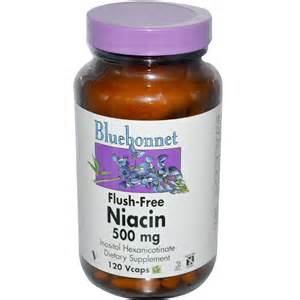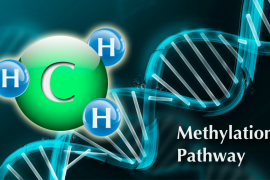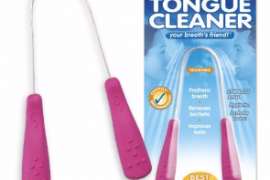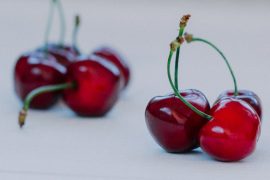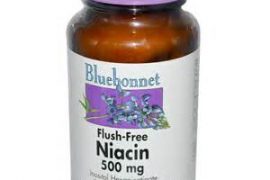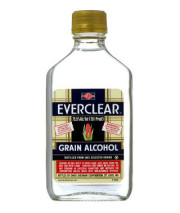by Andrew W. Saul, Editor
Reprinted with permission from the Orthomolecular Medicine News Service
(OMNS Nov 14, 2013) Statins for everyone? If media are to be believed, and if the drug industry has its way, the answer is “you bet.” The American Academy of Pediatrics has stated that kids as young as eight years of age might take statin drugs. Specifically: “As a group, statins have been shown to reduce LDL cholesterol in children and adolescents with marked LDL cholesterol elevation … . . when used from 8 weeks to 2 years for children aged 8 to 18 years.” http://pediatrics.aappublications.org/content/128/Supplement_5/S213.full
Strangely enough, American Academy of Pediatrics projects receive cash from Merck & Co., Pfizer and Sanofi-Aventis, as well as from Procter and Gamble, Nestlé and other large corporations. http://www.aap.org/en-us/about-the-aap/corporate-relationships/Pages/Friends-of-Children-Fund-President%27s-Circle.aspx
Statin drugs can produce serious side effects in adults. Such risk is of even more concern for the still-developing bodies of children. Statin side effects may include liver damage; elevated CPK (creatine kinase) and/or muscle pain, aches, and muscle tenderness or weakness (myalgia); drowsiness; myositis (inflammation of the muscles); rare but potentially fatal kidney failure from rhabdomyolysis (severe inflammation of muscle and muscle breakdown); memory loss; mental confusion; personality changes or irritability; headaches; difficulty sleeping, anxiety; depression; chest pain; high blood sugar and type 2 diabetes; acid regurgitation; dry mouth; digestive problems including bloating, gas, diarrhea or constipation; nausea and/or vomiting, or abdominal cramping and pain; rash; leg pain; insomnia; eye irritation; tremors; dizziness; and more.
What a list. Well, this is America, and you have the right to remain sick. Evidently you also have the right to be continually bombarded with exhortations to take statins, and to give them to your children as well. Statins for second-graders? Sure! Do you want fries with that? The news media, television commercials, medical schools, and especially the pharmaceutical industry all want you and your family to be good, uncritical, daily consumers of pharmaceutical medicine.
However, you also have the right to refuse drugs, and you have available nutrition-based alternatives. Here are researchers and physicians who say “no” to statins, and their reasons why:
W. Todd Penberthy, PhD (Research Professor, University of Central Florida):
“Niacin raises good cholesterol (HDL) more than any known pharmaceutical, while simultaneously lowering total cholesterol, triglycerides, and the most pathogenic form of cholesterol-associated lipoprotein (VLDL). Good medical doctors will prescribe niacin for reducing cardiovascular disease risk and provide a description of how to use it. Niacin is frequently the gold standard control used for basic research experiments using animal models of atherosclerosis. In clinical trials, when niacin has been compared to other marketed drugs it has led to most undesirable effects for business, but most therapeutically beneficial effects for the fortunate patients.
“Cardiovascular disease (CVD) kills more individuals than any other disease. Accordingly, there is tremendous drive in the pharmaceutical industry to make drugs. Merck and Schering Plough convinced doctors to spend 21 billion dollars over seven years selling Zetia (ezetimibe). Ultimately however, clinical trials revealed that Zetia actually increases cardiovascular events, making mean arterial walls thicker. Regular niacin works just as well as prescription extended release niacin, and it costs thirty times less. (Prescribed extended release niacin products cost approximately fifteen dollars a day to obtain 3,000 mg, while plain immediate-release niacin costs about fifty cents. Extended-release niacin causes less of a flush response initially, but with regular usage, regular niacin results in little to no flush at all, while all of the benefits are still maintained. The benefits of niacin for treating CVD are undeniable.
“It is rare that anyone addresses the most important question: “What works best?” It is such a simple question. Instead, too much research today proceeds primarily for profit. We have witnessed the transformation of medical motives from a “health-and-improvement motive” to a “much-increased income motive.” The profit machine has ultimately consumed the spirit or focus of many a well-intentioned doctor.
(Above abridged with permission from the foreword to Hoffer A, Saul AW and Foster HD. Niacin: The Real Story. Basic Health Pub, 2011.)
Robert G. Smith, PhD (Research Associate Professor, University of Pennsylvania):
“Although statins can lower cholesterol, they lower the risk for heart disease mainly through their anti-inflammatory and anti-clotting effects. However, statins have many side effects, some very serious, and for most people do not greatly reduce the risk of heart disease. Niacin is a much safer way to lower cholesterol. A much more effective treatment to prevent heart disease is vitamin C taken to bowel tolerance (3,000-10,000 mg/day in divided doses), vitamin E (400-1600 IU/day), niacin (800-2,000 mg/day in divided doses), magnesium (chelate, citrate, malate, chloride, 300-600 mg/day, divided doses), along with an excellent diet that includes generous servings of leafy green vegetables and only moderate amounts of meat.”
Thomas E. Levy, MD, JD (Cardiologist):
“The lower your cholesterol goes, the greater your risk of cancer, as cholesterol is a protective agent against toxins. Efforts to lessen the chances of morbidity and mortality of one major disease (coronary artery disease) should not substantially increase the chances of morbidity and mortality from another disease (cancer).”
Abram Hoffer, MD, PhD (in Niacin: The Real Story):
“Niacin is effective in decreasing the death rate of patients with cancer by protecting cells and tissues from damage by toxic molecules or free radicals. In the body, niacin is converted to nicotinamide adenine dinucleotide (NAD), used by the body to catalyze the formation of ADP-ribose.
“When the long chains of DNA are damaged, poly (ADPribose) helps repair it by unwinding the damaged protein. Poly (ADPribose) also increases the activity of DNA ligase. This enzyme cuts off the damaged strands of DNA and increases the ability of the cell to repair itself after exposure to carcinogens.”
Ralph Campbell, MD (Montana, USA):
“You have likely heard about the conclusions from Cleveland Clinic gathering of heart specialists. Their objective was to zoom in on LDL levels as they relate (directly to heart disease. No mention of LDL/HDL ratio or of triglyceride levels. Again, niacin got very little recognition. Statins have some side effects that are serious, including rhabdomyolisis and kidney failure. The panel was made up of many with financial ties to industry, but “it is practically impossible to find a large group of outside experts who have no relationship to industry.” This was followed (yes, actually) by stating the new guidelines are based on solid evidence and that the public should trust them.”
Carolyn Dean, MD, ND (in The Magnesium Miracle):
“The mineral magnesium is the natural way that the body has evolved to control cholesterol when it reaches a certain level, whereas statin drugs are used to destroy the whole process. If sufficient magnesium is present in the body, cholesterol will be limited to its necessary functions – the production of hormones and the maintenance of membranes – and will not be produced in excess.”
Jorge Miranda, PharmD (Puerto Rico):
“Statin drugs are one of my favorite examples of a sickening drug. A fixation on cholesterol fails to address the importance of correcting the excessive oxidation of LDL, and fails to recognize the importance of correcting many other contributing risk factors such as homocysteine, LPa, and CRP. It is important to recognize that the reason we form cholesterol is because its needed to form membrane, the eye’s lens, hormones and many other molecules including CoQ10. Decreasing cholesterol decreases CoQ10, which means less energy for a multitude of functions. The result can be neurologic disease and even cancer.”
William B. Grant, PhD SUNARC:
“Statin use reduces co-Q10 concentrations and leads to myopathy (muscle weakness), which can lead to heart failure. Those taking statins should be aware of this problem and consider taking co-Q10 supplements.”
Damien Downing, MBBS, MSB (United Kingdom):
“Statins overall succeed in reducing the risk of coronary events by about 17% – but that is relative risk. Taking a statin each day actually lowers ones chance of an event by about 0.16% – that is the absolute risk. But these figures are not lives saved; recent meta-analysis found only a non-significant reduction in mortality of 7 per 10,000 patient-years, or 0.07%. The difference between statins’ effects on relative risk and absolute risk is about two orders of magnitude. Just ask any man in the street whether a reduction of 0.16% in the risk of a coronary event is “significant” to him, and whether it warrants him taking statins. Unpleasant muscular side-effects occur in up to 10% of statin-takers, which may rise to 25% if the person exercises; this is unhelpful to anybody seeking to improve their cardiovascular health. But because the primary threshold for acceptance under “evidence-based medicine” is statistical significance, we are to accept that the benefit of statins has been proven. Data on worldwide sales of statins currently run at approximately US $30 billion per year.”
Perhaps this helps explain the massive media blitz favoring statins. But drugs are not the answer, unless you are a drug company.
To Learn More:
How niacin (Vitamin B3) lowers high cholesterol safely http://orthomolecular.org/resources/omns/v01n10.shtml
Cholesterol-lowering drugs for eight-year-old kids? http://orthomolecular.org/resources/omns/v04n08.shtml
American Academy of Pediatrics advertising rates for conferences: http://www.aapexperience.org/2012/downloads/AdRateCard.pdf
For publications and the American Academy of Pediatrics website: http://www.aap.org/en-us/about-the-aap/advertise-with-aap/Documents/2013-AAP_MediaKit.pdf
How the American Medical Association sells 100% of all physicians’ names to advertisers: http://www.mmslists.com/news-articles/article.asp?ID=98
(Andrew W. Saul, an orthomolecular medical lecturer for 38 years, is author or coauthor of a dozen books and is featured in the movie FoodMatters. He is a member of the Japanese College of Intravenous Therapy and the Orthomolecular Medicine Hall of Fame.)
Nutritional Medicine is Orthomolecular Medicine
Orthomolecular medicine uses safe, effective nutritional therapy to fight illness. For more information: http://www.orthomolecular.org
OMNS free subscription link http://orthomolecular.org/subscribe.html
OMNS archive link http://orthomolecular.org/resources/omns/index.shtml
 About the Author :
About the Author :
“The Megavitamin Man”, has 40 years of experience in natural health education. His world famous, free-access educational website, www.DoctorYourself.com, is peer reviewed and the largest non-commercial natural health resource on the internet.

